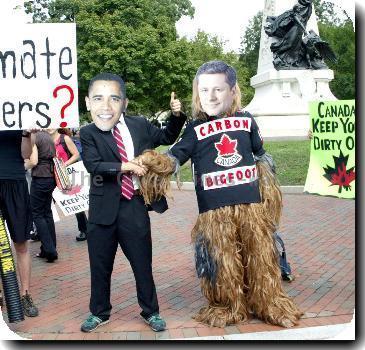World mayors gather, compare climate notes; NY’s Bloomberg sees federal help gone astray
By Jan M. Olsen, APTuesday, December 15, 2009
World mayors compare notes on saving climate
COPENHAGEN — The Obama administration should have sent federal stimulus money not to the U.S. states, but to cities, where “most of the environmental damage is done and most of the chances for improvement are,” New York Mayor Michael Bloomberg said Tuesday.
Bloomberg joined about 80 other local leaders from around the world at a “summit” that took place alongside the U.N. climate conference.
The mayors and other officials were from rich capitals like London and Tokyo and impoverished cities as Addis Ababa, Ethiopia, and Dhaka, Bangladesh. They were taking part in the five-day session to compare notes on how cities can help reduce emissions of carbon dioxide and other greenhouses gases, and save money on energy and other costs.
City leaders say they want to show the way, but can’t do it alone.
“While nations talk, cities act. Cities are delivering real cuts in greenhouse gases,” Toronto Mayor Steve Miller said. “We have already cut 1 million tons of CO2 per year. To do more, we need our national governments to act.”
Midway through the 193-nation U.N. conference Tuesday, deep divides between rich and poor nations brought talks to a crawl. Negotiators sought agreement on new reductions in greenhouse-gas emissions by industrialized countries, and controls on emissions growth in the developing world.
President Barack Obama and more than 100 other national leaders are scheduled to participate in the conference’s final days this week. Miller, Bloomberg, Copenhagen’s Ritt Bjerregaard and dozens of the other mayors Tuesday signed a joint declaration urging the leaders “to embrace this chance and seal an ambitious and empowering deal in Copenhagen.”
New York — a city of islands, subways and other underground infrastructure — will be threatened by seas rising from global warming. To guard against ever-stronger sea surges from future hurricanes, some scientists and engineers have suggested the city build giant barriers in New York Harbor.
Bloomberg, meanwhile, is moving ahead with immediate plans to reduce the city’s greenhouse gas emissions by 30 percent from 2006 levels by 2030.
The New York City Council last week approved legislation requiring owners of larger buildings to do energy audits and replace insulation and take other steps toward energy efficiency, including upgrading their lighting. The city has also planted 300,000 of 1 million new trees, has extended bike lanes over 200 miles of streets, and has encouraged conversion to hybrid vehicles of 22 percent of the taxi fleet, among other emissions-saving steps.
“It is a big deal,” Bloomberg said at a panel session after the summit opening. He boasted that the city was making progress without financial support from New York State.
In fact, the mayor said, some of the $787 billion federal stimulus package, to create jobs in the midst of U.S. recession, became a “great waste of money” when it was funneled to the states for projects.
“If the federal government really wants to do something, you give the money directly to the cities. The dumbest way to distribute the money is to send it to the states, because they have to spread it around the states for political reasons,” often to be spent on useless projects, he said.
“I’ve said this to the president and to every member of Congress I can buttonhole,” Bloomberg added. “You really have to send the money where the problem is.”
Cities and towns consume two-thirds of the world’s total primary energy and produce more than 70 percent of its energy-related carbon dioxide emissions, the International Energy Agency reports. That will grow to 76 percent by 2030, the agency says. Most comes from electrifying and heating private, commercial and municipal buildings.
Other big cities are also trying to lead on climate. Sao Paulo, Brazil, for example, a sprawl of 11 million people, has by law set as a goal a 30 percent reduction in emissions by 2013. It has already achieved 20 percent since 2005, chiefly through its new system of generating biogas for energy at landfills, instead of allowing waste methane, a greenhouse gas, to rise into the skies.
Copenhagen, a city of 1.2 million, also has set ambitious goals. It’s cut CO2 emissions by 20 percent from 1995 to 2005. Mayor Bjerregaard plans to reduce it by another 20 percent by 2015, and then to become “carbon-neutral” by 2025.
After round-table talks Tuesday, Bjerregaard said the plans and accomplishments laid out by other mayors “will inspire all of us to act.”
EDITOR’S NOTE — Find behind-the-scenes information, blog posts and discussion about the Copenhagen climate conference at www.facebook.com/theclimatepool, a Facebook page run by AP and an array of international news agencies. Follow coverage and blogging of the event on Twitter at: www.twitter.com/AP_ClimatePool
Tags: Arts And Entertainment, Barack Obama, Celebrity, Climate, Climate-cities, Copenhagen, Denmark, Environmental Concerns, Europe, Municipal Governments, New York, New York City, North America, Twitter, United States, Western Europe

